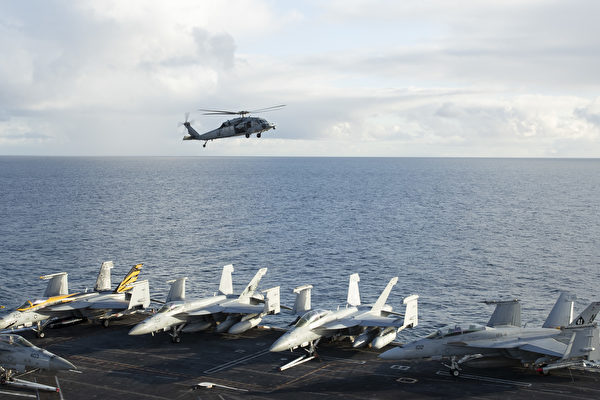In the past year, tensions between Israel and Hezbollah have escalated further as a result of the outbreak of war between Israel and Hamas. The United States has continued to strengthen its military presence in the Middle East.
According to CNN, on October 1st, two US Navy destroyers in the eastern Mediterranean Sea launched approximately 12 intercept missiles targeting Iranian missile attacks on Israel. Iran launched around 200 missiles towards Israel that day, with most being intercepted by Israel and its allies, including the United States.
This year, US troops in the Middle East have assisted Israel in intercepting Iranian attacks twice.
US Secretary of Defense Lloyd Austin stated in a released statement, “We will not hesitate to protect our forces and interests in the Middle East and support the defense of Israel and our partners in the region.”
Over the past year, various Iranian-backed armed groups have frequently carried out low-level attacks against US forces in Iraq and Syria. However, in recent months, these attacks have largely subsided. Nevertheless, with tensions escalating, the US has made it clear that broader attacks will trigger significant responses.
In addition to existing air capabilities in the region such as fighter jets, transport aircraft, and refueling planes, the Pentagon announced that more air support capabilities are being deployed to the Middle East, including F-22, F-16, F-15E, and A-10 aircraft, along with personnel totaling “several thousand” troops.
As of August, there were approximately 40,000 US troops in the Middle East.
In early August, Austin announced the deployment of the USS Abraham Lincoln Carrier Strike Group to the Middle East. The strike group consists of thousands of sailors and Marines, including three destroyers and an aircraft squadron.
By early October, the USS Abraham Lincoln Carrier Strike Group, along with its air wing consisting of eight squadrons, and the missile destroyer USS O’Kane, had entered the Gulf of Oman. Two missile destroyers in the strike group, USS Spruance and USS Frank E. Petersen Jr., were conducting operations in the Red Sea.
In addition to the firepower brought by the Lincoln strike group, the US military in the region also has multiple destroyers and capabilities, including the USS Wasp Amphibious Ready Group and the 24th Marine Expeditionary Unit (MEU) special operations capability, comprising about 4,500 sailors and Marines.
MEU is one of the US’s primary crisis response forces, with one of its fundamental tasks being the evacuation of non-combatant American citizens.
Apart from the amphibious assault ship USS Wasp, the US military in the Middle East also has the transport ship USS New York and the dock landing ship USS Oak Hill.
Furthermore, the destroyers USS Bulkeley and USS Cole, as well as the Arleigh Burke-class destroyer equipped with the Aegis combat system, USS Arleigh Burke, are also on missions in the eastern Mediterranean. USS Murphy, USS Indianapolis, and USS Stockdale are operating in the Red Sea.
Moreover, the US Army in the Middle East has thousands of conventional ground forces, as well as various air defense and artillery capabilities, including Patriot missile systems, anti-drone systems, and High Mobility Artillery Rocket Systems (HIMARS).
On April 14, Iran launched a direct attack on Israel for the first time. Iran fired over 300 missiles and drones in the attack, but they were intercepted by air defenses from the US and other allies, causing only minor damage to Israel.

